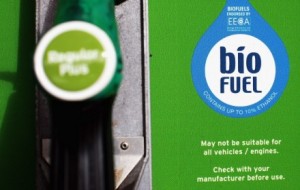The United States is roughly halfway to achieving its goal of 36 billion gallons of renewable transportation fuel by the year 2022, but the last half likely will be harder, and probably more expensive, than the first.
John Whitaker, Iowa executive director for Farm Services Administration of the U.S. Department of Agriculture, told a symposium last week that as many as 527 new biofuel plants will be needed, in addition to the 171 ethanol plants now working, to meet the mandate.
The cost: $168 billion.
“Corn ethanol has gotten consumers to accept ethanol as a fuel,” Whitaker said. But he noted that the congressionally imposed mandate sets a 16 billion-gallon limit on ethanol’s contribution to biofuels. The rest has to come from other sources such as switchgrass and miscanthus, algae, wood biomass and electrification.
Robert Brown, who directs biofuels research at Iowa State University, observed that Iowa and other corn states contributed to the big surge in ethanol production in the last decade without major technological breakthroughs.
[ad]
“The ethanol industry wasn’t built by research by the Department of Energy,” Brown said. “Farmers used available technologies. People had been making moonshine for generations and the ethanol industry put it on a larger scale.”
Source desmoinesregister.com


